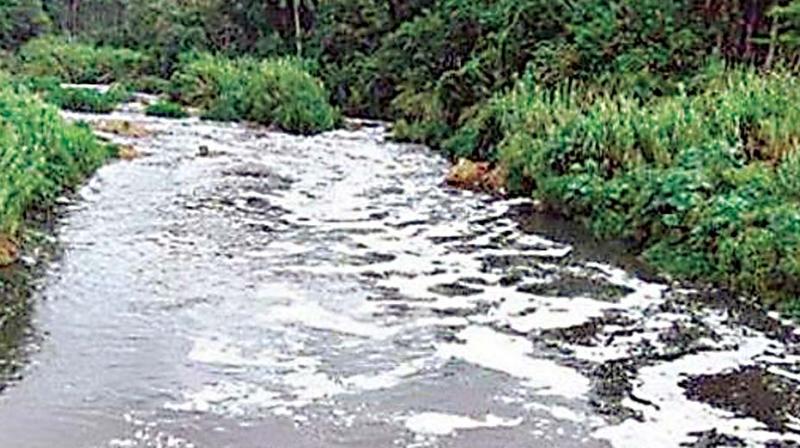Poor drainage system leads to deluge in Hyderabad
With no proper master plans, coupled with lack of political will, state capital is destined to submerge every time it rains

HYDERABAD: Civic authorities were not able to monitor the flow in storm water drains and sewer lines during the rains over the past two weeks, as most of them have been encroached. Nodal agencies are now asking the state government to work on the master plans and implement them or else the city would be inundated not only during monsoon but every time it rains.
The three spells of devastation were not an act of God but the result of human negligence, an official said. Over three years, at least Rs 1,000 crore government property and Rs 5,000 crore private property had been damaged in the Greater Hyderabad Municipal Corporation (GHMC) limits, the official said.
The city has no master plan either for storm water drains or the sewerage network. For 9,000 km of roads, the city has only 1,000 km of storm water drains. The ideal figure would be twice the road length, or 18,000 km.
The city has only about 4,000 km of sewers, that too in the core city which are in need of an overhaul. The suburbs either have no drain network or the work to build them is incomplete. Hyderabad used to get about 750 mm of rain in a year, of which about 175 mm occurred in September. However, rapid urbanisation changed all that. For the past three years, the city has been receiving over 1,100 mm of rainfall every year.
The city witnessed massive floods in 2000, which resulted in an effort to improve the storm water drain and sewer network. The government hired Kirloskar Consultants in 2002 as technical consultants to draft a drainage master plan for the MCH area, then comprising 71 drains totalling 169 km in a 170-sq km area.
Based on their study, the MCH took up improvement of the Murki, Balkapur and Kukatpally nalas with Jawaharlal Nehru National Urban Renewal Mission (JNNURM) funds. The works could be completed only on a few stretches due to non-removal of encroachments and properties in the others.
The master plan prescribed wider nalas, with the intention that they should serve for 50 years. This required a large number of encroachments to be removed. The design was therefore modified with a one-year return. However, after discussions, it was proposed to retain larger widths for primary nalas which had large catchment areas.
As this was being worked out, the government merged 12 adjoining municipalities with the corporation in 2007, which multiplied the problem. It sparked rapid and uncontrolled urban growth and change of land use.
This impacted the network of urban lakes which affected the drainage of excess water when it rained. Lands were encroached upon and lakes became smaller. Choked lakes themselves became polluted.
Also, the Kirloskar and other studies were limited to the MCH area. The GHMC, which had become a 625-sq km behemoth, retained Voyants Solutions Pvt. Ltd in 2008 to draw up a master plan. They divided the GHMC area into 16 hydraulic zones and submitted the detailed project reports (DRPs) for 102 drains totalling 221 km in length.
The GHMC currently has 390 km of major drains — up from 169 km barely 15 years ago.
After the formation of Telangana, the government prepared proposals to widen nalas at 43 stretches over a total length of 100 km at a cost of Rs 2,300 crore to prevent flooding at most vulnerable areas. A drone survey was also conducted. The government sanctioned Rs 230 crore in 2017.
However, the works were stopped midway due lack of strong political will. The apathy resulted in flash floods in October 2020. Damage to the government property was estimated at Rs 567 crore in the GHMC area as also thousands of crores worth private property.
Putting aside Kirloskar and Voyants committee reports, the government asked the GHMC to prepare a comprehensive action plan to fight city floods and sanctioned Rs 910 crore to take up 64 works.
Then came the Strategic Nala Development Programme (SND), which officials call an eyewash. It is only an extension of existing networks with minimal land acquisition to widen the nalas, they said.
A civic official said the SNDP was resulting in waste of public money. Officials said without addressing the core problem by developing the storm water network of at least 15,000 km, the problem of urban floods would not be solved.

